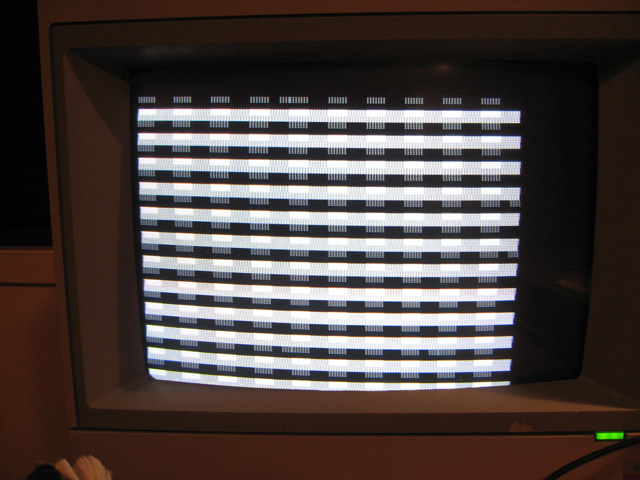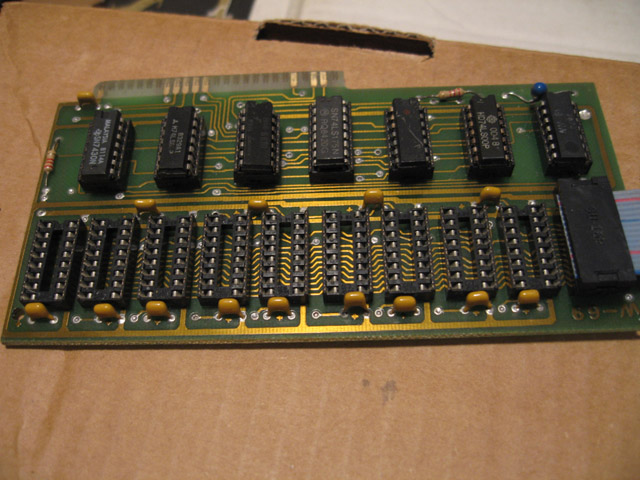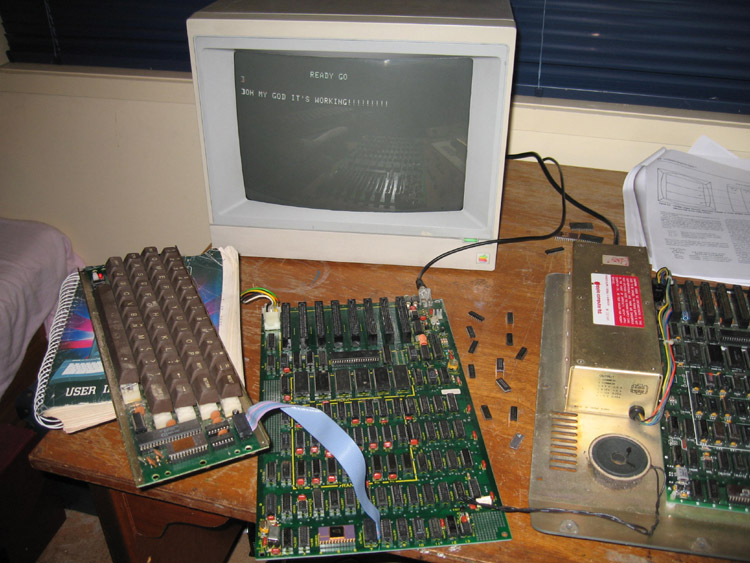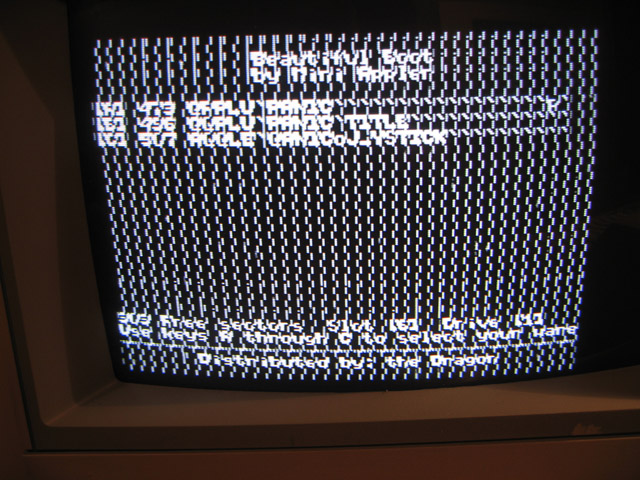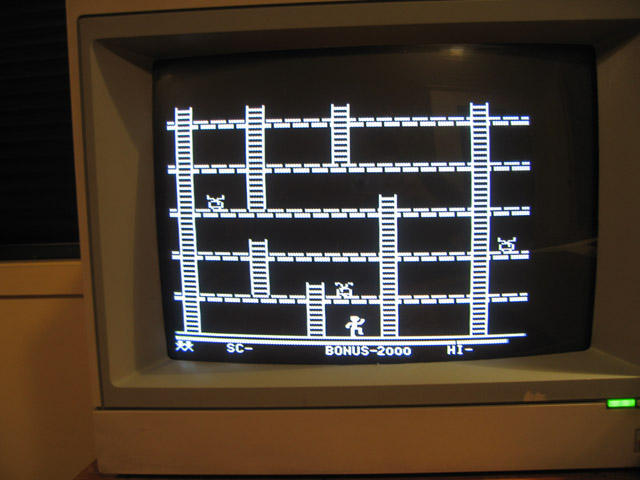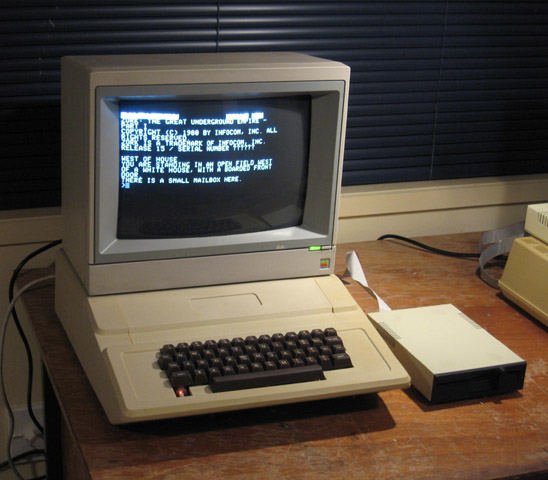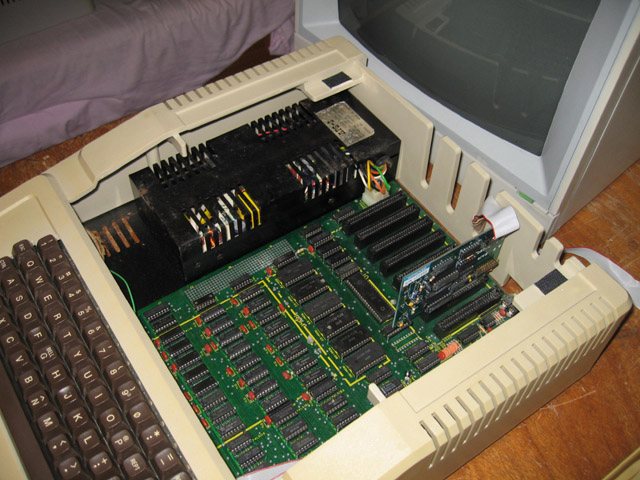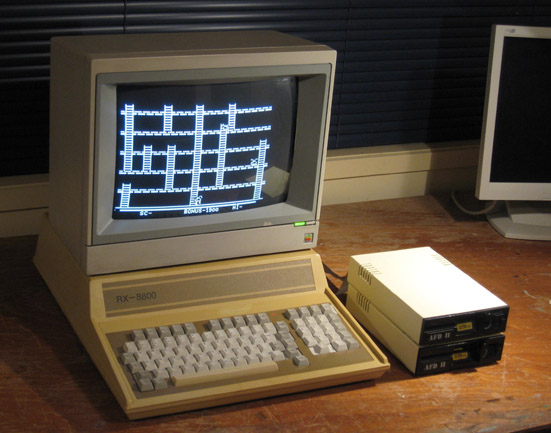tezza
Veteran Member
In a previous post, Mike Willegal says the following about my Apple II+s...
With all 3 boards the video display is indeed stable. I'm starting to wonder if it is a bad socket or two? The system on startup doesn't even get to the beep on any of the boards.
The screen below shows the pattern on the Europlus. Anyone recognise it? It's stable and doesn't flicker. If I remove the CPU and switch the machine on I get the same pattern. I've tried subsituting those chips around the CPU and PSU but to no avial.
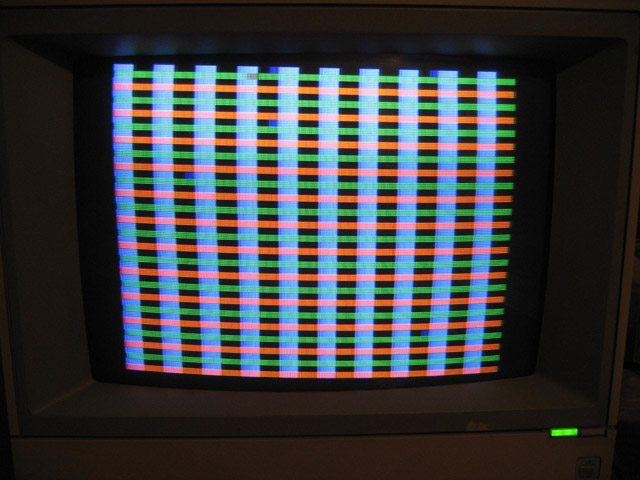
The other two machines show just the white vertical bars. It's unlikey, but maybe the same chip(s) are damaged in all 3 of them!
Tez
If the video display is stable, your DRAM should be ok, though there is the still the possibility of bad bits. Once the machine is up, you can run a DRAM test, such as the one included in the programmers aid ROM. Connect a speaker and see if you are getting a beep when powered on. The power on beep routine is called almost immediately after boot. If not beeping, the processor is having issues reading and writing memory.
Most likely source of problems is the address decoding logic, but this can be tricky to figure out, without the right tools. I've had lots of issues with flakey sockets on these old boards due to the poor quality sockets that Apple used. This is more likely than a having a bad chip, though either or both is possible.
With all 3 boards the video display is indeed stable. I'm starting to wonder if it is a bad socket or two? The system on startup doesn't even get to the beep on any of the boards.
The screen below shows the pattern on the Europlus. Anyone recognise it? It's stable and doesn't flicker. If I remove the CPU and switch the machine on I get the same pattern. I've tried subsituting those chips around the CPU and PSU but to no avial.

The other two machines show just the white vertical bars. It's unlikey, but maybe the same chip(s) are damaged in all 3 of them!
Tez
Last edited:

